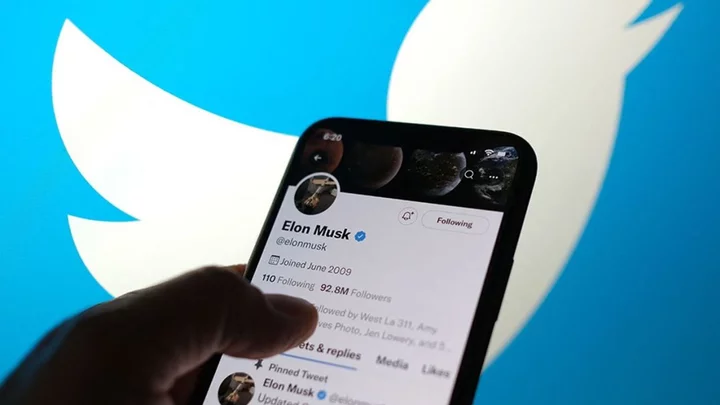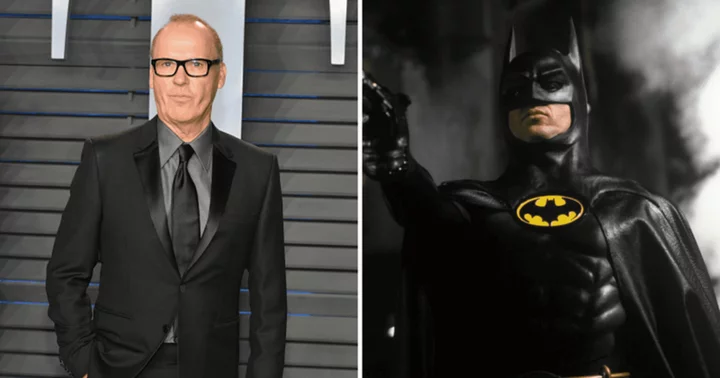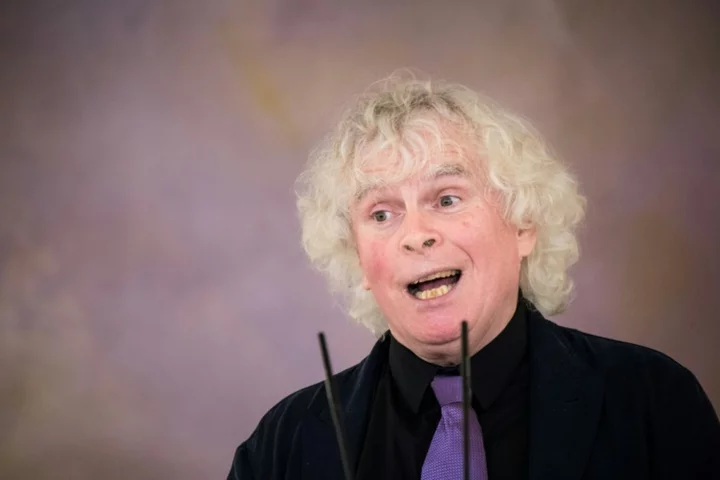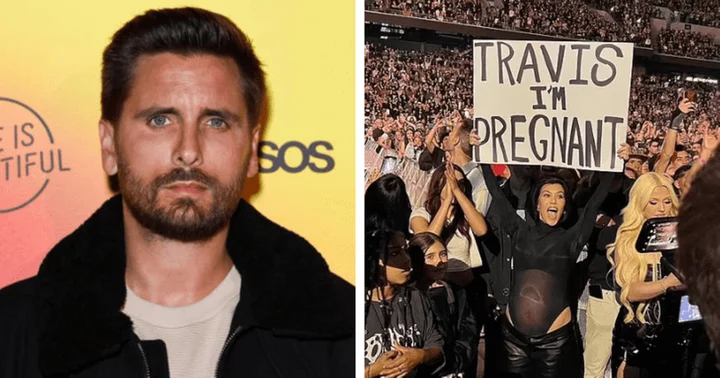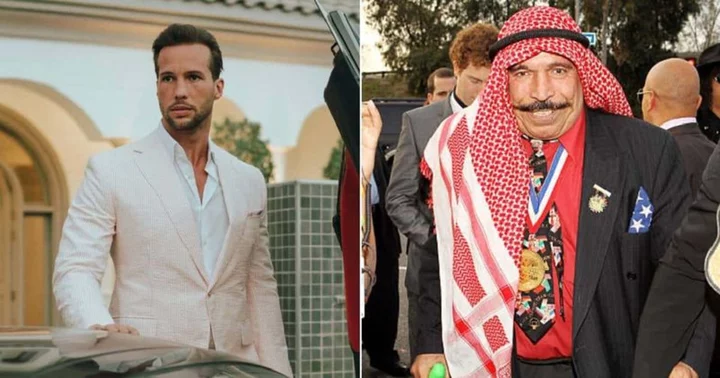X most certainly marks the spot for the world’s most headline-grabbing billionaire.
Elon Musk announced on Sunday that he would be giving Twitter a major makeover: changing its name to “X” and doing away with its famous bird logo.
He tweeted (or should that be X-ed?): “Soon we shall bid adieu to the twitter brand and, gradually, all the birds.”
And, he said: “If a good enough X logo is posted tonight, we’ll make go live worldwide tomorrow. To embody the imperfections in us all that make us unique.”
Sign up for our free Indy100 weekly newsletter
It’s all part of his overarching plan to transform X into an “everything app”, much like China’s WeChat, which handles everything from payments to messaging to micro-blogging.
Posting a beaming photo of himself with his arms raised in a cross, Musk added: “Not sure what subtle clues gave it away, but I like the letter X.”
So where does his love of the letter come from? And where else has he used it?
Here, indy100 takes a look at the SpaceX founder’s somewhat unorthodoX obsession.
X.com
When it comes to letters of the alphabet, X is certainly the most associated with euphemism – anything branded X-rated is bound to raise an eyebrow or two.
And this is quite possibly one of the reasons the proud provocateur liked it so much to begin with.
According to Ashlee Vance, author of the 2015 biography ‘Elon Musk: Tesla, SpaceX, and the Quest for a Fantastic Future’, his fascination with the letter began with one of his earliest ventures.
Musk, one of the world's richest men, co-founded the online banking service X.com in 1999, but, Vance said, not everyone was enthusiastic about the name.
"Everyone tried to talk him out of naming the company that back then because of the sexual innuendos, but he really liked it and stuck with it," he revealed.
However, the critics were soon able to breathe a sigh of relief: X.com merged with competitor Confinity Inc., in 2000 and the name was changed to the family-friendly PayPal.
And yet, Musk clearly wasn’t able to let go of his brainchild. So, in 2017, he bought the url "X.com" back off PayPal, tweeting that the domain "has great sentimental value,” as NPR notes.
Now, if you type “X.com” into your web browser, you will be directed to the Twitter – soon to be X – homepage.
SpaceX
After making his first fortune with the sale of his tech company Zip2 for $307 million (around £240 million) in 1999, and PayPal in 2002 for $1.5 billion (around £1.32 billion), the universe was the limit for Musk.
The same year he sold PayPal, he founded his space flight company Space Exploration Technologies Corp.
However, the name doesn’t exactly roll off the tongue, so it was abbreviated to SpaceX.
The Tesla ‘X’
While Musk opted for three alternative consonants in the name of his electric car company (which he started in 2003), he eventually couldn’t resist adding a touch of X.
In 2015, the father-of-six unveiled Tesla’s third model: an e-car lovingly named… you guessed it.
Tim Higgins, author of ‘Power Play: Tesla, Elon Musk, and the Bet of the Century’, explained that Musk had cheeky intentions when choosing the names of his models. The idea was that, combined, they would spell out the word “sexy," Higgins said.
However, another car company – Ford – threw a spanner in the works thanks to its ownership of the rights to the “E” model.
Musk, therefore, had to settle on calling his second model “3” – a "kind of a backwards E," as Higgins pointed out – to semi-achieve his desired acronym.
But yes, there are now S, 3, X and Y models of the cars.
Baby names
In 2020, Musk and his then-partner, Grimes, welcomed a baby boy, calling him X Æ A-12.
However, the couple were forced to alter the spelling of the name to X AE A-XII, after being notified that it breached legal conventions.
California law dictates that names on birth certificates must employ “the 26 alphabetical letters of the English language,” although apostrophes and dashes are allowed, NME reports.
Grimes, whose real name is Claire Boucher, explained via tweet that the X part of her son’s name refers to the “unknown variable” in algebra. Meanwhile, the Æ refers to the “elven spelling of Ai (love &/or Artificial intelligence)," and the A-12 at the end is apparently a nod to the Lockheed A-12 reconnaissance aircraft — the couple’s “favourite” plane.
Despite all of this, the pair – who are now separated – refer to their child simply as “Little X”, Boucher admitted in an interview with Bloomberg shortly after his birth.
Two years later, the then-couple announced that they’d had a baby girl via surrogate, naming her Exa Dark Sideræl.
However, earlier this year, Boucher confirmed that they’d changed her name to “Y” – yet again proving that single letters at the bottom of the alphabet really are Musk’s thing.
xAI
On 12 July this year, the 52-year-old announced the formation of a new company called xAI.
It's goal is simple, according to its website: "To understand the true nature of the universe."
The new startup, based in the San Francisco Bay Area, has hired a group of top AI researchers who formerly worked at OpenAI, Google, Microsoft and Tesla. But we don't know much more about it than that.
Musk was a co-founder and early funder of the artificial intelligence research laboratory OpenAI. However, he's grown increasingly critical of the company as it’s gained global prominence and commercial success with last year’s release of ChatGPT.
In April, the billionaire criticised ChatGPT in an interview with Tucker Carlson, telling the then-Fox News host that the chatbot had a liberal bias and that he planned an alternative that would be a “maximum truth-seeking AI that tries to understand the nature of the universe.”
And... voilà xAI.
What neXt?
It’s time for the renaissance of X.com, but with a grand new purpose.
Weeks before forking out the $44 billion (around £34 million) to buy Twitter in October, Musk tweeted that the eye-watering purchase was simply “an accelerant to creating X, the everything app".
"He wants to create an app similar to how WeChat is used in China, where it's part of the fabric of day-to-day life,” the billionaire’s biographer Vance explained to NPR.
“You use it to communicate, to consume news, to buy things, to pay your rent, to book appointments with your doctor and even to pay fines.”
Hinting at the financial difficulties that have plagued Twitter both historically and since Musk’s acquisition, Vance pointed out: "The company clearly needs a new, bigger business if it's to make the type of money that would justify his investment and satisfy his ambition.”
Indeed, the world-famous entrepreneur is doing everything he can to build the hype around his company’s new facelift.
On Monday (24 July), he retweeted a message from his newly-appointed Twitter CEO Linda Yaccarino, which read: “It’s an exceptionally rare thing – in life or in business – that you get a second chance to make another big impression. Twitter made one massive impression and changed the way we communicate. Now, X will go further, transforming the global town square."
She continued: “X is the future state of unlimited interactivity – centered in audio, video, messaging, payments/banking – creating a global marketplace for ideas, goods, services, and opportunities. Powered by AI, X will connect us all in ways we’re just beginning to imagine.”
So… why X?
Musk suggested that he’d chosen “X” to replace Twitter because he wanted something that “embod[ies] the imperfections in us all that make us unique”.
The letter has a number of different spiritual, cultural and mathematical meanings – any, or all, of which may have informed his lifelong fascination with the letter.
As Boucher noted in her baby name explanation, X connotes the “unknown variable” in algebra. It is, of course, also the symbol for multiplication, and in linguistics, it’s what’s known a “phonetic chameleon” – meaning that it’s used to replicate a number of different sounds.
It is also known as signifying the end of something – or death – think the X in a skull and crossbones emblem or the crosses drawn on the eyes of the dead in cartoons.
It also signifies an error or cancellation, or that which is negative, and has long been recognised as an occult symbol for Satan.
In other words, it has become the most “nihilistic” of letters, as psychologist Leon F Seltzer pointed out in a piece for Psychology Today.
This all goes to suggest that Musk appreciates X’s malleability – how it can be birth and death, cancellation and multiplication, nothing and everything.
X.com is dead. Long live X.com.
Have your say in our news democracy. Click the upvote icon at the top of the page to help raise this article through the indy100 rankings.

